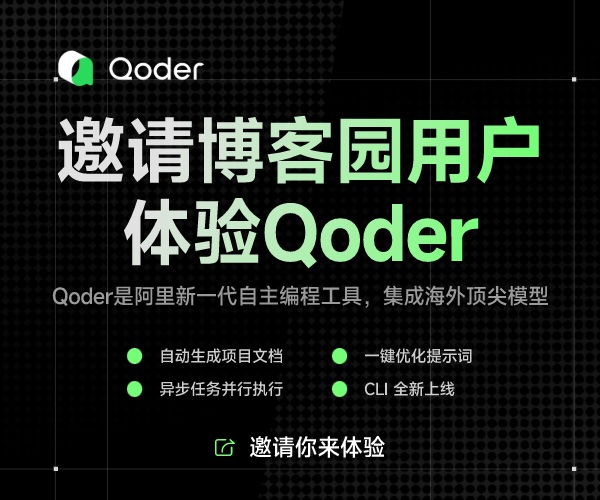c++ effective心得
1.Operator overloading
一般的: c& c::operator=(const c&){。。。。return *this;}; --------格式 運(yùn)算符的重載
w = x = y = z = "hello";//可以返回引用,效率高
a+b+c+d //必須返回類(lèi),而不是返回引用
c c::operator=(const c &){ 。。。。。。return *this;};
Operators that can be overloaded
+, -, *, /, %, ^, &, +=,-=,*=,/=, (), [], >>, ==,=,->,++,--, ->*, … new, delete
Operators that can not be overloaded
., ::, ?:, .*
//Notes for ++, -- operator
區(qū)別:
T& operator ++() //prefix ++a
T operator++(int) //postfix a++
一般情況下幾乎總要遵循operator=輸入和返回的都是類(lèi)對(duì)象的引用的原則.
必須返回一個(gè)對(duì)象時(shí)不要試圖返回一個(gè)引用,當(dāng)需要在返回引用和返回對(duì)象間做決定時(shí),你的職責(zé)是選擇可以完成正確功能的那個(gè)。至于怎么讓這個(gè)選擇所產(chǎn)生的代價(jià)盡可能的小,那是編譯器的生產(chǎn)商去想的事。
2.
const成員函數(shù)不被允許修改它所在對(duì)象的任何一個(gè)數(shù)據(jù)成員。mutable在處理“bitwise-constness限制”問(wèn)題時(shí)是一個(gè)很好的方案,但它被加入到c++標(biāo)準(zhǔn)中的時(shí)間不長(zhǎng),所以有的編譯器可能還不支持它。
explicit表示必須顯示的調(diào)用該函數(shù)。
3.void including more times
#findef
#define
#endif
等價(jià)于
#progma once
4 .struct
#pragma pack(pop, n)
struct Employee{
char cName[5];
short nAge;
float dSalary;
bool bMarried;
};
sizeof(Employee) depends on struct member alignment. Default is 4 bytes alignment. sizeof(Employee) = 16
2 bytes data wants to start from even address, 4 bytes data wants to start from address that is 4 times, 1 byte data can start from any address
我們可以用以下改變默認(rèn)的對(duì)齊方式。
#pragma pack(pop, n)
5。enum :It can define a set of const values.
6。In fact, C++ compiler creates a global function for each member function, and add another parameter whose type is our class. 一般位類(lèi)名_函數(shù)名_參數(shù)列表
7。constructor ※ deconstructor
Copy Constructor
Copy constructor is a constructor that has a parameter whose type is class reference.
and the class reference is const.
eg:
CRectangle( const CRectangle& other)
eg:
CComplex a;
CComplex b=a; // Copy constructor is invoked
b=a; //Assignment operator is invoked
Converting Constructor
一般定義位explicit函數(shù),必須被顯示的調(diào)用
8。const in class
4 cases in a class
const int member;只能在初始化列表里進(jìn)行初始化
int funct( const int nFactor,…);參數(shù)位常熟,在函數(shù)種不可被修改
const int func(…); 返回的值位常熟不可以再被賦值和修改
int func(…) const; 常函數(shù),不可以修改所在類(lèi)的成員,要修改的成員必須有mutable關(guān)鍵字
9。inline
You can see there is no function calling in assembly.
A function defined within a class definition is an inline function.
Although a function is inline, that whether to expend or not depends on compiler or its settings.一般函數(shù)里有循環(huán)的系統(tǒng)認(rèn)為不內(nèi)聯(lián)
10. Member-initializer-list
Const, reference and base class constructor (that has arguments) must be initialized or called in member-initializer-list
Members are initialized by order that they are defined in class definition, not by order their initializers are in member-initializer-list.
eg:
CCircle::CCircle() : PI(3.14159), m_dOrgX(0.0), m_dOrgY(0.0)
{
}
基類(lèi)的初始化,按照子類(lèi)定義時(shí)的順序,不時(shí)初始化列表的順序
11。 class Default functions
Constructor [do nothing]
Copy constructor [bitwise copy]
Destructor ( ~ ) [do nothing]
Assignment operator ( = ) [bitwise copy]
Address operator ( & )
Dereference operator ( * )
//當(dāng)有指針是自己定義拷貝構(gòu)造和賦值
eg:
if(other.m_pBuffer!=NULL) {
m_pBuffer=new TCHAR[tcslen(other.m_pBuffer)+1];
tcscpy(m_pBuffer,other.m_pBuffer);}
12 this 指針
Point lower;
lower.setX(20).setY(30).doubleMe() ;
因?yàn)椋?BR> Point& setX(int x) { _x = x; return *this;}
Point& setY(int y) { _y = y; return *this;}
void doubleMe()
{ _x *= 2;
_y *= 2;
}
13。 const static int PI=1;類(lèi)中的成員直接賦值,只有這一種情況可以,必須為int.
double CCircle::PI = 1.0;類(lèi)中的靜態(tài)成員初始化必須再類(lèi)外,而且還的有類(lèi)型, 如前面.
靜態(tài)成員的初始化不能再構(gòu)造函數(shù)中進(jìn)行!
14. Dynamic_cast
The dynamic_cast is used for safe casting from a pointer to a base class to a pointer to a derived class, often referred to as safe down casting. It is used when one must use the features of the derived class that are not present in the base class.
typeid typeid( object );
The typeid operator returns a reference to a type_info object that describes `object`.
If the expression is of class type and the class contains one or more virtual member functions, then the answer may be different than the type of the expression itself. For example, if the expression is a reference to a base class, the typeid operator indicates the derived class type of the underlying object.
PTTI運(yùn)行時(shí)刻類(lèi)型識(shí)別允許“用指向基類(lèi)的指針或引用來(lái)操作對(duì)象”的程序能夠獲取到“這些指針或引用所指的對(duì)象”的實(shí)際派生類(lèi)型。
1. Dynamic_cast它允許在運(yùn)行時(shí)刻進(jìn)行類(lèi)型轉(zhuǎn)換,從而使程序能夠在一個(gè)類(lèi)層次結(jié)構(gòu)中安全地轉(zhuǎn)換類(lèi)型,把基類(lèi)指針轉(zhuǎn)化成派生類(lèi)指針,或把指向基類(lèi)的左值轉(zhuǎn)換成派生類(lèi)的引用,當(dāng)然只有在保證轉(zhuǎn)換能夠成功的情況下可以。
2. typeid操作符,它指出指針或引用指向的對(duì)象的實(shí)際派生類(lèi)型。它在程序中可以用于獲取一個(gè)表達(dá)式是一個(gè)類(lèi)類(lèi)型,并且含有一個(gè)或多個(gè)虛函數(shù)成員,則答案會(huì)不同于表達(dá)式本身的類(lèi)型。例如,如果表達(dá)式是一個(gè)基類(lèi)的引用,則typeid會(huì)指出底層對(duì)象的派生類(lèi)類(lèi)型。
15. What exceptions can a function throw if it has an exception specification of the form throw()? (6’) throw all kinds of exceptions
If it has no exception specification?
What means the syntax: catch (…) catch all types of exceptions
posted on 2005-11-09 12:56 夢(mèng)在天涯 閱讀(1874) 評(píng)論(2) 編輯 收藏 引用 所屬分類(lèi): CPlusPlus


